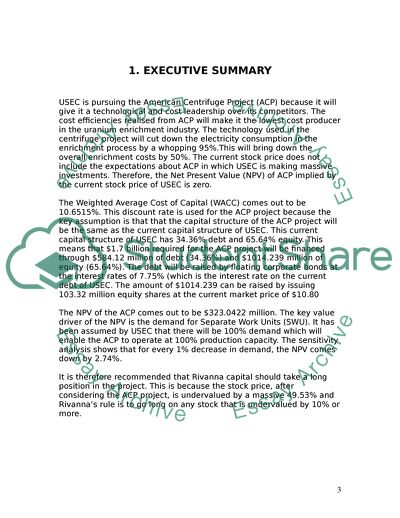Cite this document
(The American Centrifuge Project Report Example | Topics and Well Written Essays - 3000 words, n.d.)
The American Centrifuge Project Report Example | Topics and Well Written Essays - 3000 words. https://studentshare.org/technology/1750821-the-usec-inc-case
The American Centrifuge Project Report Example | Topics and Well Written Essays - 3000 words. https://studentshare.org/technology/1750821-the-usec-inc-case
(The American Centrifuge Project Report Example | Topics and Well Written Essays - 3000 Words)
The American Centrifuge Project Report Example | Topics and Well Written Essays - 3000 Words. https://studentshare.org/technology/1750821-the-usec-inc-case.
The American Centrifuge Project Report Example | Topics and Well Written Essays - 3000 Words. https://studentshare.org/technology/1750821-the-usec-inc-case.
“The American Centrifuge Project Report Example | Topics and Well Written Essays - 3000 Words”. https://studentshare.org/technology/1750821-the-usec-inc-case.


